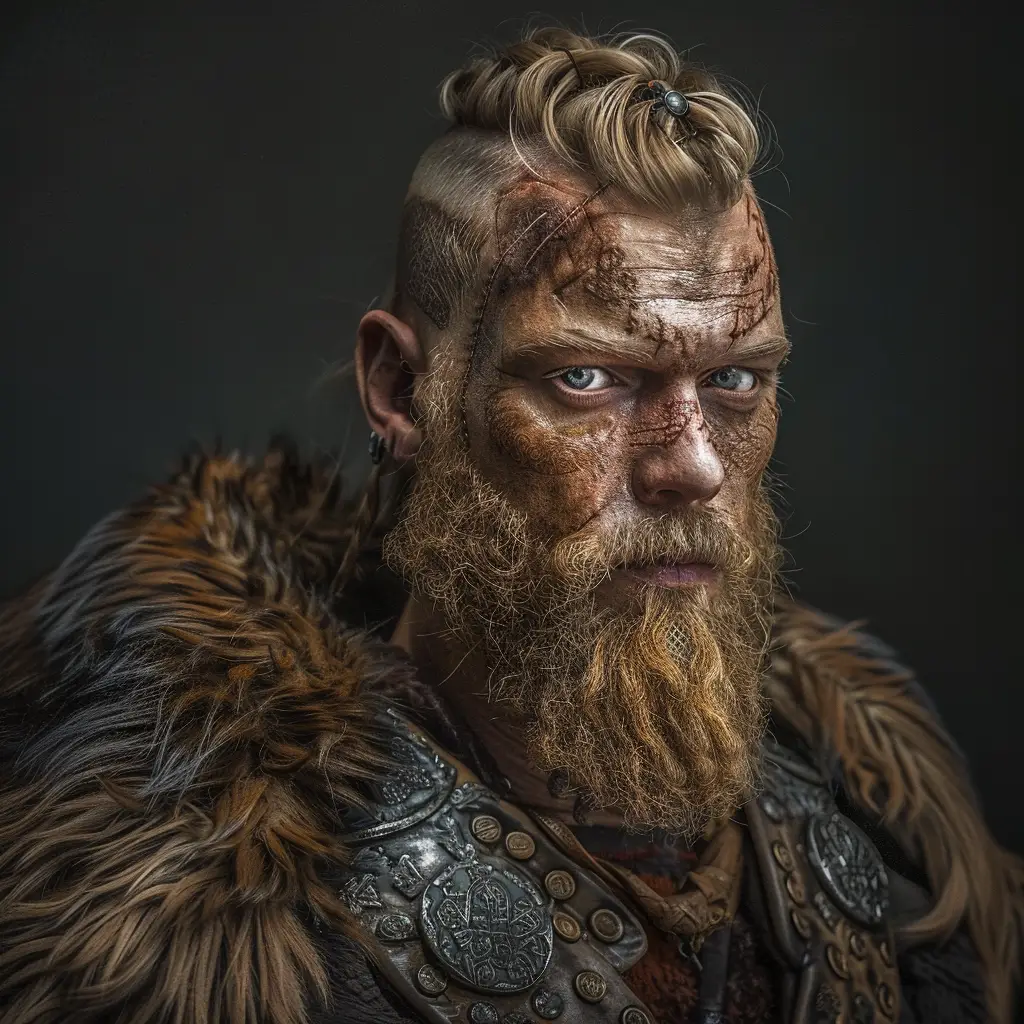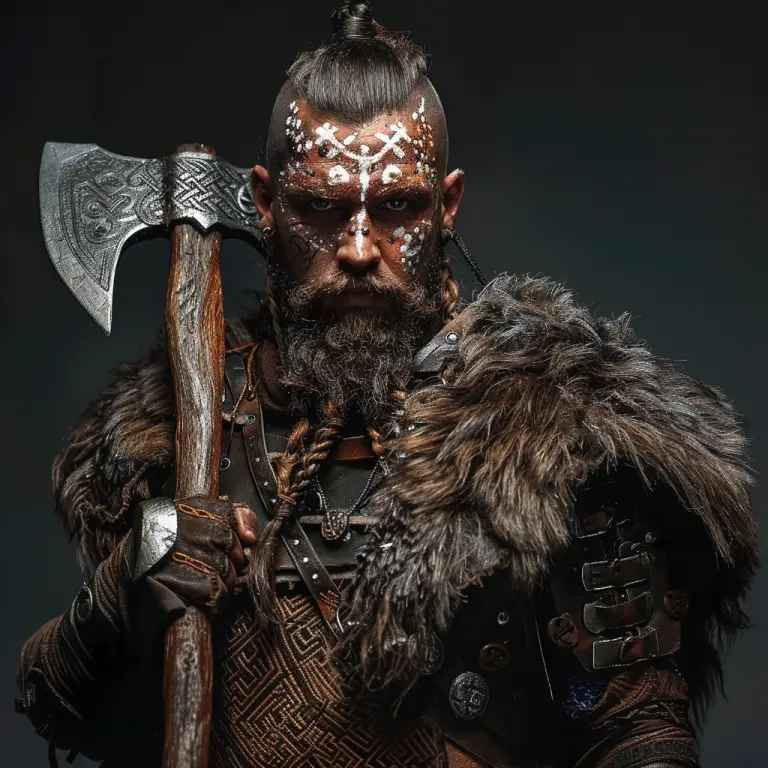Ivar the Boneless was a prominent Viking leader and a member of the legendary Danish ruling family, the House of Ragnar Lodbrok. Ivar’s epithet, “the Boneless,” has generated much speculation and debate among historians and scholars.
Origin of the nickname “the Boneless“: The origin of the nickname “the Boneless” is uncertain, and various theories exist. Some suggest that it may refer to a physical condition such as osteogenesis imperfecta, a genetic disorder characterized by brittle bones. Others propose that it could be a metaphorical description related to Ivar’s agility, flexibility, or cunning.
Ivar the Military Leader: Ivar the Boneless is best known for his military prowess and leadership during the Viking raids on the British Isles. He is believed to have been one of the leaders of the Great Heathen Army, a coalition of Viking forces that invaded Anglo-Saxon England in the late 9th century.
Campaigns in England: Ivar led several successful campaigns in England, participating in battles such as the Siege of York and the Battle of Edington. His strategic and tactical skills contributed to the Viking conquest of large parts of England and the establishment of the Danelaw, a region under Viking control.
Role in Norse Sagas: Ivar the Boneless is prominently featured in Old Norse sagas such as the “Saga of Ragnar Lodbrok” and the “Tale of Ragnar’s Sons,” where he is depicted as a cunning and ruthless warrior. These sagas often mix historical events with legendary elements, making it challenging to separate fact from fiction.
Ivar the Boneless remains a significant figure in Viking history and mythology, inspiring numerous legends, sagas, and works of literature. His exploits have been romanticized and adapted in various forms of media, contributing to his enduring legacy as one of the most memorable figures of the Viking Age.
Ivar the Boneless was one of the most famous Viking leaders, and his father was Ragnar Lothbrok (Ragnarr Loðbrók), the legendary Norse king and warrior. His mother is often identified as Aslaug (Kráka), a noblewoman with supposed magical abilities, according to the sagas.
Marriage: According to some sources, Ivar the Boneless is said to have been married to a woman named Estrid, who is mentioned in various medieval texts and sagas.
Estrid is described as the daughter of King Ælla of Northumbria, the Anglo-Saxon king who was famously executed by the Great Heathen Army led by Ivar’s brothers, including Ragnar Lodbrok. The historical accuracy of this account is uncertain, as medieval sources often contain embellishments and inaccuracies.
Additionally, some sources suggest that Ivar had multiple wives or concubines, which was not uncommon among Viking leaders of his time. However, specific details about his marital relationships are scarce, and much of what is known comes from later literary works that may not accurately reflect historical reality.
Ivar’s Children: According to some sources, Ivar the Boneless is said to have had children, but specific details about his offspring are scarce and vary depending on the source. One of the most well-known references to Ivar’s children comes from the medieval Icelandic saga known as the “Tale of Ragnar’s Sons,” which recounts the exploits of Ragnar Lodbrok and his descendants.
In the saga, Ivar the Boneless is said to have fathered several sons, including notable figures such as Sigurd Snake-in-the-Eye, Hvitserk, and Ubbe, who are depicted as legendary Viking warriors and leaders in their own right. These characters play prominent roles in the saga’s narrative, participating in various battles and adventures alongside their father and brothers.
However, it’s important to note that the “Tale of Ragnar’s Sons” and other medieval sagas are works of fiction based on oral traditions and historical events, and their accounts may not accurately reflect historical reality.



